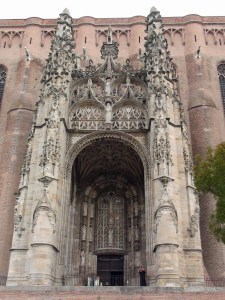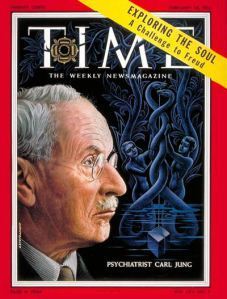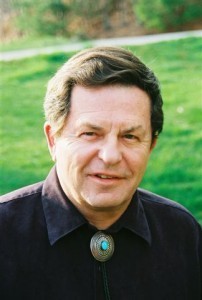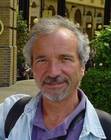Victor E. Smith's Blog, page 4
February 4, 2015
Book Review: Mystic Tea by Rea Nolan Martin
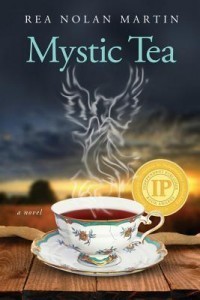 Confessing my prejudice against what might be chick-lit, I somewhat skeptically started into Rea Nolan Martin’s Mystic Tea after seeing it reviewed by a colleague on the Visionary Fiction Alliance website. I was, however, quickly drawn into its quirky world, inhabited by dopers, grumpy nuns, and genuine mystics, all drawn together into a decaying convent along the Hudson River. And I thoroughly enjoyed its superb blending of all the elements of an excellent story. Rea even wielded the ax against “established” patriarchal religion without coming off like a harridan.
Confessing my prejudice against what might be chick-lit, I somewhat skeptically started into Rea Nolan Martin’s Mystic Tea after seeing it reviewed by a colleague on the Visionary Fiction Alliance website. I was, however, quickly drawn into its quirky world, inhabited by dopers, grumpy nuns, and genuine mystics, all drawn together into a decaying convent along the Hudson River. And I thoroughly enjoyed its superb blending of all the elements of an excellent story. Rea even wielded the ax against “established” patriarchal religion without coming off like a harridan.
Unlike some visionary fiction that is little more than diluted didacticism, Rea is a masterful storyteller whose message, promoting genuine spirituality over stodgy ritualism, is dripped into the reader’s mind by very real characters stumbling hilariously along in their quest for the “meaning of life.” She sneaks the higher dimension (spirituality) into the skeptic’s awareness in the same way that the unseen Universe insinuates Itself into our daily lives, crisis, glimmer or laugh at a time. An excellent application of the Hermetic principle: “As above so below. As below so above.”
Highly recommended as a work of visionary fiction in “mod” mode, or just a darn good book, especially if read with a steaming cup of mystic tea.
********
 Click to subscribe to this site’s RSS Feed.
Click to subscribe to this site’s RSS Feed.Click this link to order a copy of The Anathemas, a Novel about Reincarnation and Restitution. Copyright 2013 by Victor E. Smith. All rights reserved.
Share your thoughts on this post. Put in your comment in the space below. Thank you.
December 24, 2014
WHERE ARE THE GRANDPARENTS IN THE CHRISTMAS STORY?
December 23, 2014
My dear Family and Friends,
It’s that time again, as the calendar is turning, when we take a moment to stop, look at, and acknowledge the past year: what happened, where, who it happened with, and conclude, usually via email, with an eloquent summation like, “Gee whizz, wasn’t 2014 something!” Then quick hugs and off we go for the next 365.
No offense and probably no surprise, but I’ve decided to uphold my reputation as a non-conformist and side-step that tradition again this year. Recaps are 20th Century anyway as social media now tells everything about everybody almost before it happens. Since the beginning of December, I’ve been fishing around for a theme for this year’s missive (theme may sound snooty but my writer brain won’t kick over without one, sorry). Despite a year jam-packed with events of import, no over-arching thesis appropriate for the holiday season seemed to be jelling—until this very morning (Dec. 23), when, following some breadcrumbs dropped by recent contemplations, I happened upon a monumental hole in the traditional recounting of Jesus’ birth:
WHERE ARE THE GRANDPARENTS IN THE CHRISTMAS STORY?
And before you young ‘uns skitter past this question as one only for old fogies (or whatever term of endearment you use for your elders), listen up. Someday, if you’re lucky, your hair will be as gray, you limbs as creaky, and your memories as flighty, as ours. So there! (I once had a partner, best left unidentified, who couldn’t wait to get old so she could take her handbag and smack the heads of all the stupid people around her—and get away with it. Don’t know how that turned out.)
But back to the stable in Bethlehem. Of course, the animals were there, perhaps too many cows and mules and too few dogs and kitties for current taste—oh, well. And shepherds to represent the tough young working studs, although few of those nowadays spend their nights watching sheep on hillsides—but the idea is there. And, fashionably late are the wise men on camels with really expensive gifts, three of them to over-represent the 1%–some things don’t change. And there are angels; I like to view them as including the spirits of those who have been here and made it to the beyond, but take it upon themselves to return on occasion to remind us about ideas like “peace on earth” that we are usually too busy to keep in mind.
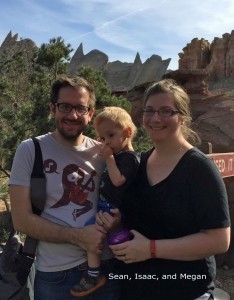 Zeroing in now on the main event. Of course, the newborn baby, the youngest generation, is rightly front and center. For the second year I have my grandson Isaac to remind me of the preciousness of our new arrivals. Then come Mary and Joseph representing the current active generation, the doers and shakers, those having the babies, building the skyscrapers, keeping the computers running, finding cures for cancer, and plotting how to get to Mars. My daughter Megan, Isaac’s mom, is my personal Mary—it befuddles my gray matter to think that so few years ago she was the newborn and I was the parent juggling career and other concerns with so little time left over for her. As a pediatrician doing her residency, Megan endures the paradox of having to work ungodly hours with other people’s children, leaving her precious few to devote to her own.
Zeroing in now on the main event. Of course, the newborn baby, the youngest generation, is rightly front and center. For the second year I have my grandson Isaac to remind me of the preciousness of our new arrivals. Then come Mary and Joseph representing the current active generation, the doers and shakers, those having the babies, building the skyscrapers, keeping the computers running, finding cures for cancer, and plotting how to get to Mars. My daughter Megan, Isaac’s mom, is my personal Mary—it befuddles my gray matter to think that so few years ago she was the newborn and I was the parent juggling career and other concerns with so little time left over for her. As a pediatrician doing her residency, Megan endures the paradox of having to work ungodly hours with other people’s children, leaving her precious few to devote to her own.
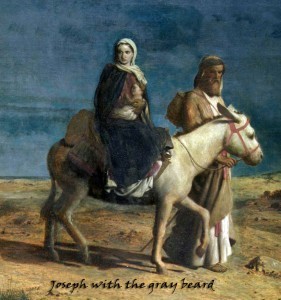 Fortunately, she has an intrepid husband in Sean, who’s taken on the bulk of child care and household duties as well as his own job. Which, in a roundabout way, brings us to Joseph in our Christmas story. If ever there was a go-to guy, following seemingly impossible orders from angels in dreams or trotting the family to Egypt to escape mean King Herod, it was Joseph. But religious history, for reasons of dogmatic consistency—I’m not going there—sidelined him to an obscure role behind mother and child. Even as a kid I thought it odd that Joseph was often depicted as an old man, gray beard and stooped shoulders beside a much younger Mary, rather than the virile husband she deserved. They made him look more like a grandparent than a parent. Was this perhaps an awkward attempt to include the older generation into the story? If so, I’m not buying it, and I’m guessing few grandparents would. I don’t envy Sean’s role as fulltime dad and part-time mom; been there done that; I’m perfectly happy with part-time. So Joseph gets to remain the husband/father of suitable age; but we are still left with the question: where are the grandparents?
Fortunately, she has an intrepid husband in Sean, who’s taken on the bulk of child care and household duties as well as his own job. Which, in a roundabout way, brings us to Joseph in our Christmas story. If ever there was a go-to guy, following seemingly impossible orders from angels in dreams or trotting the family to Egypt to escape mean King Herod, it was Joseph. But religious history, for reasons of dogmatic consistency—I’m not going there—sidelined him to an obscure role behind mother and child. Even as a kid I thought it odd that Joseph was often depicted as an old man, gray beard and stooped shoulders beside a much younger Mary, rather than the virile husband she deserved. They made him look more like a grandparent than a parent. Was this perhaps an awkward attempt to include the older generation into the story? If so, I’m not buying it, and I’m guessing few grandparents would. I don’t envy Sean’s role as fulltime dad and part-time mom; been there done that; I’m perfectly happy with part-time. So Joseph gets to remain the husband/father of suitable age; but we are still left with the question: where are the grandparents?
Early tradition names people named Joachim and Anna (Google it) as Mary’s parents, Jesus’ grandparents, but they are not in the Bible. Joseph’s parents remain completely unidentified. We can’t conclude that there weren’t grandparents. The story already has enough anomalies about Jesus’ human lineage without adding that in. He had grandparents, and they probably spoiled him rotten, but they likely never got into the scene because they chose to stay behind the scenes, a role preferred by grandparents since the beginning of time. (Not that Joachim and Anna didn’t give Joseph an earful over letting their grandson be born in a barn; just that the bible reporters weren’t around to scoop the story.)
Grandparents, I’ve learned from observation and now experience, like to remain semi-invisible (except when we don’t). We’ve been the infant, the center of our universe, but matured to learn that everyone else is the center of the universe as well; we are each unique and none special. We’ve been teenagers, worse than animals at times, so no envy towards the beasts and their plumb role on the stable stage. We have been the parents, workers, managers, the externally involved; we enjoyed our time in the sun, endured the sweat and burn, and now are content to sit in the shade and watch from the sidelines. And we certainly haven’t joined any heavenly choir yet; we may sometimes feel the brush of feathers, at which we hold our breaths and hope it is the touch of angels’ wings and not something wrong with our minds.
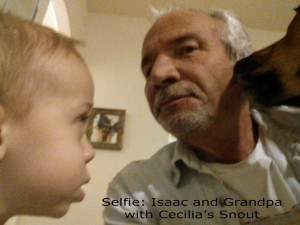 Grandparents, I’ve learned, prefer to live contentedly in that in-between area just off stage, ready to step in when asked but happy to step back when the need is satisfied. We may move a bit slower, an example, we like to think, to a hectic world that easing off is quite all right. It may annoy when we ask questions when you want snap answers, but we’ve discovered that your own answer is the best answer, no matter how wise ours may seem. We try to provide but remain unperturbed if we fall short; we know all needs are taken care of, no matter what.
Grandparents, I’ve learned, prefer to live contentedly in that in-between area just off stage, ready to step in when asked but happy to step back when the need is satisfied. We may move a bit slower, an example, we like to think, to a hectic world that easing off is quite all right. It may annoy when we ask questions when you want snap answers, but we’ve discovered that your own answer is the best answer, no matter how wise ours may seem. We try to provide but remain unperturbed if we fall short; we know all needs are taken care of, no matter what.
Grandparents are neither fools nor gods although we try to avoid the former and aspire to the latter. We’ve already lived much of our current human life; we don’t regret our mistakes because it doesn’t change the past. We quietly offer the fruit of our experience to the next generation, fully expecting them to stand on our shoulders as they reach for and achieve heights we can only imagine. To paraphrase the words of the grown-up Jesus as he took leave of his followers: “The things that we did, you shall also do, and much greater things.” As it should be.
So where are the grandparents in the Christmas* story? Right behind the back curtain, probably in an easy chair, maybe snoozing. But no worry, we wake up easily. Just give us a call.
Merry Christmas and Happy New Year to all you grandparents, to all you busy parents, to all you grandchildren. And, in case you don’t fall into the first two categories, the last certainly includes you. Like that newborn baby in the manger in Bethlehem, there is no human being who wasn’t and isn’t the Grand Child of the Universe, of the Great Spirit, of God.
With Love to all,
Vic/Dad/Grandpa
God Within
*The Christmas story, in my opinion, is not a “Christian” story. It belongs to no separate sect or belief system. It is Every Human’s story: the celebration of the birth of the Divine within each of us. Let’s work in the coming year towards for the day when no war, persecution, or prejudice is perpetrated “in God’s name.” Claiming that anything that harms one’s fellow man is done in God’s name or in any name for God is the most horrific of lies. No more of that.
November 24, 2014
The “Flyby” in Visionary Fiction
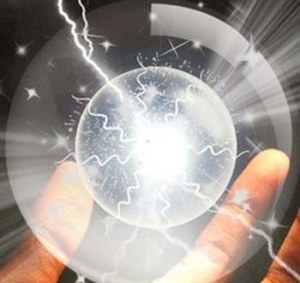 What’s a Flyby?
What’s a Flyby?Where do the ideas and visions that eventually become complex cities and timeless books come from? I don’t know actually—how to blunt a piece from the get-go! However, I do know that they first show up as blip of light barely large and lasting enough to evoke a “What the heck was that?” It gets a smidge of our attention before it flicks on by. After a while, it comes back, this time a bit brighter, lingering only long enough to make us think: where have I seen that before? It’s got a bit more of our attention. It keeps up this appearing and disappearing act until it gets under our skin, be it as annoyance or curiosity. We just have to find out what it is. It now has our full attention, and off we go to chase it, exactly as it intended that we do.
Years back, I coined the word flyby to name this elusive phenomenon for myself. It’s more commonly called an inkling, a term meaningful to folks who remember the fountain pen. (I’m old enough to have used one, but those dastardly things left more ink on my fingers than on paper, so for me flyby has a more pleasant ring.)
By whatever name, these mini-UFOs of mind space are crafty critters. By seeming to avoid detection, they coyly aim to attract attention, which happens to be their fuel and food. They have to be chased down and taken in before they can morph into manifestation. Quite human in behavior, we might say. Without attention, recognition, curiosity, and capture, they remain fussy potential no-things buzzing about in an ethereal soup, alien vessels without a place to moor.
In quantum terms, the flyby is the first glimmer of specificity in a wave, like a splash of moonlight on undulating water that an observer notices and forms into an image, particularizing it as a photograph or phrase, and thus giving it a unique existence that marks it an entity separate from the other unobserved reflections of light in the ether.
The Flyby in Visionary Fiction
The visionary writer aims to fosters growth in consciousness—alertness, awareness—in the manner of an astronomer setting out to explore a distant star or a biologist searching for a curative compound. Imagination is his telescope-microscope through which he magnifies his perception so it will penetrate into the microcosms and macrocosms of infinite potentiality. And flybys are the intimations he looks for, signals that something barely visible but worthwhile is in the available vicinity.
Like the heavens with its myriad stars, flybys are likely to appear wherever one cares to look. But human consciousness seems burdened with an entropy that shrinks our field of vision as soon as we let down our guard. Why perhaps that, despite billions of humans passing through earthly life and speaking or writing a billion100 words on that experience, the bulk of the current population is still picking through Wal-Mart looking for that one bargain that will reveal the purpose of life.
Flybys, despite their ubiquity, are, by nature, Flibbertigibbets (How long I have waited to use that word!). Like our fleeting New Year’s resolutions, they have to be corralled, cornered, and pounded into the ground before they take root and grow into something good, beautiful and true. The visionary fiction writer, who largely works in the realm between the abstract or spiritual and the concrete or material, might best style himself a professional wrangler with electric eels of potential, whose nature, like dreams, is to tease, only then to blithely slip out of our mental fingers.
The Flyby as Self-Accumulator
Cathedral of Saint Cecilia Albi, France (Photo by V. Smith)
Without belaboring the necessary and sometimes tedious stages through which a flyby must pass from intuition to notes to outline and then on to completed story—a sequence paralleled in every creative act—let’s examine its primary, seemingly magical, internal characteristic: its self-generative nature. This is the process, not matter that it surpasses our understanding, that turns inspiration, with a due amount of perspiration, into a finished creation, from which we, all godlike, can step back and pronounce as good, and on occasion, really damn good.
The flyby, the seed of it all, is a self-accumulator. At first it is a very lonely monad (think about—but not too hard—the concept of the alleged Higgs boson or God Particle in physics) that flits or flirts about with the sole purpose of attracting attention from a target. It wants a suitable partner. In absorbing that first particle of attention, the twosome forms a dyad, a couple, and from there the dating game is off to the races. The more attention the writer or artist gives to the inspiration, the more the inspiration takes form as a creation.
 To ask which came first is to pose the impossible “chicken-or-egg” riddle. After the initial coupling, to attempt to separate the insight from the in-sighted is to doom the creation to a stillbirth. And if, by the way, our discussion here smacks with the language of reproduction (flyby easily equates with pollen in the plant kingdom and semen in the animal realm), it is not coincidental. The process of creation, proceeding from the humble flyby unto the most magnificent cathedral, is, as even physicists now accept, a single sequence that takes the simplest building block and from it fashions all that is.
To ask which came first is to pose the impossible “chicken-or-egg” riddle. After the initial coupling, to attempt to separate the insight from the in-sighted is to doom the creation to a stillbirth. And if, by the way, our discussion here smacks with the language of reproduction (flyby easily equates with pollen in the plant kingdom and semen in the animal realm), it is not coincidental. The process of creation, proceeding from the humble flyby unto the most magnificent cathedral, is, as even physicists now accept, a single sequence that takes the simplest building block and from it fashions all that is.
The flyby represents the potent seed of all visionary writing and deserves to be received as a gift to be nurtured with loving care. And that crucial task is what we will examine in Part Two of this two-part post.
[Reposted from http://visionaryfictionalliance.com/2014/11/23/the-flyby-in-visionary-fiction/ where it was originally published on 11/24/14]
********
 Click to subscribe to this site’s RSS Feed.
Click to subscribe to this site’s RSS Feed.Click this link to order a copy of The Anathemas, a Novel about Reincarnation and Restitution. Copyright 2013 by Victor E. Smith. All rights reserved.
Share your thoughts on this post. Put in your comment in the space below. Thank you.
October 7, 2014
Carl Jung’s Portrait of the Visionary Artist
Carl Jung, “Psychology and Literature,” Modern Man in Search of a Soul, p. 169
Jung on Cover of Time, Feb. 14, 1955
My choice for the lead-in quote above is intentionally ominous. According to Jung, Visionary Fiction, largely the unvarnished chronicle of the Hero’s Journey, does not accommodate faintness of heart in either its writers or readers. While a profoundly uncomfortable notion even if kept in proper context, it offers a deep enough truth to warrant considerable mental roiling.
Since Jung’s ideas and their phrasing require little editorializing by his student, I’ve largely limited this article to a concatenation of some of the more memorable quotes from “Psychology and Literature.”
In a previous 2-part article, “Carl Jung and Visionary Fiction, (see Part 1 and Part 2 on this site), examining Jung’s 1929 seminal essay, which introduced the concept of visionary fiction by name, focus was on the visionary work itself; but, as he points out in the lecture’s introduction, its complete study must be twofold:
We may expect psychological research, on the one hand, to explain the formation of a work of art, and on the other to reveal the factors that make a person artistically creative….
In the case of the work of art we have to deal with a product of complicated psychic activities—but a product that is apparently intentional and consciously shaped. In the case of the artist we must deal with the psychic apparatus itself. In the first instance we must attempt the psychological analysis of a definitely circumscribed and concrete artistic achievement, while in the second we must analyze the living and creative human being as a unique personality.
Although these two undertakings are closely related and even interdependent, neither of them can yield the explanations that are sought by the other. It is of course possible to draw inferences about the artist from the work of art, and vice versa, but these inferences are never conclusive. At best they are probable surmises or lucky guesses.
Causal analysis, even though it can be applied with some benefit to both the work of art and the artist, is bound to fall short, Jung says, “because the creative aspect of life which finds its clearest expression in art baffles all attempts at rational formulation. Any reaction to stimulus may be causally explained; but the creative act, which is the absolute antithesis of mere reaction, will forever elude the human understanding. It can only be described in its manifestations; it can be obscurely sensed, but never wholly grasped.”
Portrait of the Visionary Artist (It isn’t a pretty picture.)
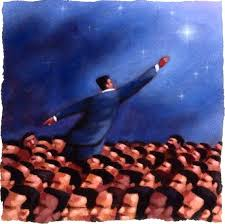 When the art form is specifically visionary fiction, which addresses those primordial experiences that arise “from timeless depths; it is foreign and cold; many-sided, demonic and grotesque,” as Jung describes VF in the first part of this lecture, its channel for manifestation, the writer, is bound to be a paradox in character.
When the art form is specifically visionary fiction, which addresses those primordial experiences that arise “from timeless depths; it is foreign and cold; many-sided, demonic and grotesque,” as Jung describes VF in the first part of this lecture, its channel for manifestation, the writer, is bound to be a paradox in character.
Every creative person is a duality or a synthesis of contradictory aptitudes. On the one side he is a human being with a personal life, while on the other side he is an impersonal, creative process. Since as a human being he may be sound or morbid, we must look at his psychic make-up to find the determinants of his personality. But we can only understand him in his capacity of artist by looking at his creative achievements.
While the visionary artist does not function in any official capacity, the opposite being nearer the truth, he nevertheless resembles, Jung maintains, the English gentleman, military officer, or cardinal “who function as such in an impersonal role, and their psychic makeup is qualified by a peculiar objectivity.”
The specifically artistic disposition involves an overweight of collective psychic life as against the personal. Art is kind of an innate drive that seizes a human being and makes him its instrument. The artist is not a person endowed with free will who seeks his own ends, but one who allows art to realize its purposes through him. As a human being he may have moods and a will and personal aims, but as an artist he is “man” in a higher sense—he is “collective man”—one who carries and shapes the unconscious, psychic life of mankind. To perform this difficult office it is sometimes necessary for him to sacrifice happiness and everything that makes life worth living for the ordinary human being….
The artist’s life cannot be otherwise than full of conflicts, for two forces are at war within him—on the one hand the common human longing for happiness, satisfaction and security in life, and on the other a ruthless passion for creation which may go so far as to override every personal desire. The lives of artists are as rule so highly unsatisfactory—not to say tragic—because of their inferiority on the human and personal side, and not because of a sinister disposition. There are hardly any exceptions to the rule that a person must pay dearly for the divine gift of the creative fire.
With the exception perhaps of the few human beings who have mastered the tightrope between genius and madness, all visionary writers experience the chaos that their vocation imposes on their personal lives. We all come endowed with a certain capital of energy, Jung posits. “The strongest force in our make-up will seize and all but monopolize this energy, leaving so little over that nothing of value can come of it. In this way the creative force can drain the human impulses to such a degree that the personal ego must develop all sorts of bad qualities.” This argument won’t score a second invitation to hobnob with polite company, but it may help the artist to tolerate his personal limitations.
The Realm of the Mothers
What prize might prompt a human being, with a perfectly normal existence available, to flirt with a life that could well be an absolute hell? It isn’t for the money. As Jung noted, “the reading public for the most part repudiates this kind of writing.” To answer this legitimate concern, Jung draws not from his psychological research but from his understanding of the human soul. His conclusions will not resolve the VF writer’s angst but should likely stimulate him or her to continue the quest, come what may.
How can we doubt that it is his art that explains the artist, and not the insufficiencies and conflicts of his personal life? These are nothing but the regrettable results of the fact that he is an artist—that is to say, a man who from his very birth has been called to a greater task than an ordinary mortal. A special ability means a heavy expenditure of energy in a particular direction, with a consequent drain from some other side of life.
It makes no difference whether the poet knows that his work is begotten, grows and matures with him, or whether he supposes that by taking thought he produces it out of the void. His opinion of the matter does not change the fact that his work outgrows him as a child its mother. The creative process has feminine quality, and the creative work arises from unconscious depths—we might say, from the realm of the mothers. Whenever the creative force predominates, human life is ruled and molded by the unconscious as against the active will, and the conscious ego is swept along on a subterranean current, being nothing more than a helpless observer of events. The work in process becomes the poet’s fate and determines his psychic development. It is not Goethe who creates Faust, but Faust which creates Goethe.
Participative Mystique
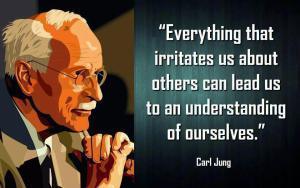 But the last line above prompts a further question: for what purpose would Goethe submit to Faust transforming the original Goethe? Was he not good enough? Jung answers this question of purpose as applied to both visionary writer and reader:
But the last line above prompts a further question: for what purpose would Goethe submit to Faust transforming the original Goethe? Was he not good enough? Jung answers this question of purpose as applied to both visionary writer and reader:
The work of the poet comes to meet the spiritual needs of the society in which he lives, and for this reason the work means more to him than his personal fate, whether he is aware of this or not. Being essentially the instrument for his work, he is subordinate to it, and we have no reason for expecting him to interpret it for us…a great work of art is like a dream; for all its apparent obviousness it does not explain itself and is never unequivocal…to grasp its meaning, we must allow it to shape us as it once shaped him. Then we understand the nature of the experience. We see that he had drawn upon the healing and redeeming forces of the collective psyche that underlies consciousness with its isolation and its painful errors; that it has penetrated to that matrix of life in which all men are embedded, which imparts a common rhythm to all human existence, and allows the individual to communicate his feeling and his striving to mankind as a whole.
The secret of artistic creation and of the effectiveness of art is to be found in a return to the state of participative mystique—to that level of experience at which it is man who lives, and not the individual, and at which the weal and woe of the single human being does not count, but only human existence. This is why every great work of art is objective and impersonal, but none the less profoundly moves us each and all. And this is also why the personal life of the poet cannot be held essential to his art but at most a help or hindrance to his creative task. He may go the way of a Philistine, a good citizen, a neurotic, a fool or a criminal. His personal career may be inevitable and interesting, but it does not explain the poet.
Participative mystique–what a delicious phrase to characterize the entire process of creating a visionary work. It brings to mind a dynamic concert in which author, book, and reader each contribute their unique portion, which then blends, as if by magic from another realm, into a breath-taking whole that far surpasses the sum of its parts.
(This post simultaneously published also on the Visionary Fiction Alliance website on 10/7/14)
********
 Click to subscribe to this site’s RSS Feed.
Click to subscribe to this site’s RSS Feed.Click this link to order a copy of The Anathemas, a Novel about Reincarnation and Restitution.Copyright 2013 by Victor E. Smith. All rights reserved.
Share your thoughts on this post. Put in your comment in the space below. Thank you.
August 20, 2014
Review: Margaret Duarte, Between Now and Forever
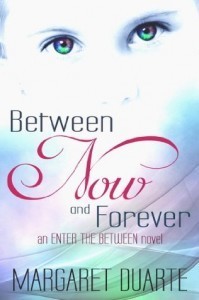 Margaret Duarte’s Between Now and Forever is a fascinating creation for several reasons, of which I will take up only one. Like her protagonist, novice teacher Marjorie Veil, the author serves society by illustrating that Indigo Children, a term which even Wikipedia downplays as a “pseudoscientific New Age concept,” are here among us, their advanced perceptual development is real, and, merely provided with understanding and a chance, they will blossom into the very geniuses our world needs to resolve the problems that has brought it to the brink.
Margaret Duarte’s Between Now and Forever is a fascinating creation for several reasons, of which I will take up only one. Like her protagonist, novice teacher Marjorie Veil, the author serves society by illustrating that Indigo Children, a term which even Wikipedia downplays as a “pseudoscientific New Age concept,” are here among us, their advanced perceptual development is real, and, merely provided with understanding and a chance, they will blossom into the very geniuses our world needs to resolve the problems that has brought it to the brink.
Across the ages, the establishment has treated anyone with paranormal abilities, any mode of acumen beyond the five senses, as a mutant, making a rare few saints of inimitable stature and the rest demon-possessed or mentally unbalanced and thus deserving only to be locked away or worse. The seven children in Ms. Veil’s class, all from normal enough home environments, are destined for the latter should they luck out and survive the excesses and addictions that such kids tend towards once they accept the “freak” label others paste on them. The book is fiction, but the predicament is real and perplexing to anyone who has encountered and cares for this type of precocious youth—and there may be many more than expected.
But Between Now and Forever does more than bring attention to a prevalent problem. It demonstrates a detailed alternative for mentoring such children, drawn from simple—although not easy— modalities, available right now to those with minds and hearts open enough to try something “different” with those who are “different.” Besides being a good story with many vivid characters, this book is a must-read for Indigo Children—it will give them hope—and their caretakers—it will point to a workable way. I suggest that it be in the hands of every teacher and school administrator because, I dare guess, there are Indigoes in just about every modern classroom, and the old ways just won’t work with them; they already know better.
Well done, Margaret.
To order on Amazon, click here .
********
 Click to subscribe to this site’s RSS Feed.
Click to subscribe to this site’s RSS Feed.Click this link to order a copy of The Anathemas, a Novel about Reincarnation and Restitution.Copyright 2013 by Victor E. Smith. All rights reserved.
Share your thoughts on this post. Put in your comment in the space below. Thank you.
July 23, 2014
Jessie’s Song by Eleni Papanou
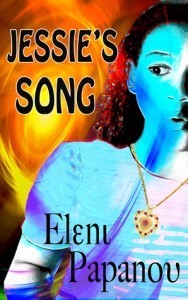 Jessie’s Song is the second work by Ms. Papanou that I have read and reviewed, the first being Unison (The Spheral Book I) . While the subject matter of the two is radically different, the rapid pace and startling imagination remain distinctive, causing me to be curious about the effect of that “spontaneous kundalini awakening” mentioned in her biography. As exotic as her settings are, she makes the reader feel that she has been there and is writing from actual experience.
Jessie’s Song is the second work by Ms. Papanou that I have read and reviewed, the first being Unison (The Spheral Book I) . While the subject matter of the two is radically different, the rapid pace and startling imagination remain distinctive, causing me to be curious about the effect of that “spontaneous kundalini awakening” mentioned in her biography. As exotic as her settings are, she makes the reader feel that she has been there and is writing from actual experience.
Jessie’s Song, at its core a love story, largely takes place in the post-death realm that the couple traverses in tandem. (Spoiler Alert!) Unique is that for one of the characters, Markos, it is a near-death experience (NDE), while for his wife Stella it is full death experience (FDE), with the author demonstrating an excellent command of the literature on both “in-between” states. It gets complicated in parts—such subject matter is difficult to present with only words. It is not entertainment in the usual sense; the reader has to maintain focus and be willing to work a bit to relate to the unusual. At the end my only reservation was that perhaps I ought to read it again to get it all.
The music/poetry component does not distract—even for a jazz almost-illiterate like me—from the story as such an element might have done in hands less nimble at weaving the many threads together. I even enjoying the sense of feeling like a “groupie” to Markos’s band and its background story, a role I’ve loathed in real life.
Once again, Eleni proves to be an avant-garde Visionary Fiction author, whose works is on the leading edge in a genre that is already well out in front in exploring those mysterious realms beyond ordinary human consciousness.
To order on Amazon, click here .
********
 Click to subscribe to this site’s RSS Feed.
Click to subscribe to this site’s RSS Feed.Click this link to order a copy of The Anathemas, a Novel about Reincarnation and Restitution.Copyright 2013 by Victor E. Smith. All rights reserved.
Share your thoughts on this post. Put in your comment in the space below. Thank you.
July 14, 2014
Celebrating Visionary Fiction Pioneer Monty Joynes
Monty Joynes
Join me in Celebrating Visionary Fiction Pioneer Monty Joynes on the Visionary Fiction Alliance website.
I am the fortunate owner of a set, each inscribed with a personal message, of all four volumes of the original Booker series by Monty Joynes, adventurer, Vietnam “era” vet, magazine editor, travel writer, diplomat, and author of more than twenty published books, among other accomplishments. Noteworthy here is that all these books, published between 1997 and 2000 by Hampton Roads Publishing Company, has Visionary Fiction prominently printed on their back covers as the genre. In other words, what the VFA have been striving to make happen in the two years of its website’s existence, had already been accomplished by at least one popular author with an established publishing house some fifteen years ago.
Who is this enigmatic Monty Joynes, who, according to his bio, resides in the relative seclusion of the Blue Ridge Mountains in North Carolina with his wife and creative partner, Pat? And how did he happen upon the concept and write books that embody the major characteristics of visionary fiction so many years before the VFA was formed to define and promote VF as a genre? To date, Monty Joynes has been part of the hidden history of visionary fiction; the purpose of this post is to make him hidden no more….
Read the entire post on the Visionary Fiction Alliance site
********
 Click to subscribe to this site’s RSS Feed.
Click to subscribe to this site’s RSS Feed.Click this link to order a copy of The Anathemas, a Novel about Reincarnation and Restitution.Copyright 2013 by Victor E. Smith. All rights reserved.
Share your thoughts on this post. Put in your comment in the space below. Thank you.
June 26, 2014
Pilgrimage to an American Literary Shrine

Walden Pond from the original site of Henry David Thoreau’s cabin
In a just-concluded trip back East, I had the privilege to once again visit Concord Massachusetts, one of America’s richest cultural and historical sites just a few miles from Boston. Of course, it is known in the history books as the terminus of Paul Revere’s Ride and the scene of the Battle of Lexington and Concord at the beginning of the American Revolution; but for me as a writer it is a town that birthed and housed a whole pod of brilliant writers and thinkers, all living in the same area, jawing in the same pubs and coffee houses, and eventually being laid to rest in the same cemetery.
No attempt to recap their careers or summarize their works here; if you went to school in the USA, you know their names and should have been urged to read their works. So I’ll just share some personal photos [click photos to enlarge] taken there on Monday, June 25, 2014 in a visit I made there with Linda, a lovely early-life friend with whom I had just reconnected after a 30-year hiatus. If I speak as if these authors too are long-lost friends, it is done with due reverence for voices that provided deep inspiration throughout my own writing career.
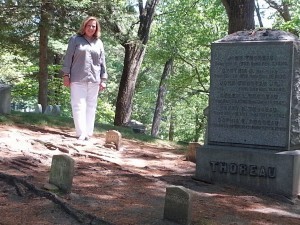 The Anathemas, a Novel about Reincarnation and Restitution.Copyright 2013 by Victor E. Smith. All rights reserved.
The Anathemas, a Novel about Reincarnation and Restitution.Copyright 2013 by Victor E. Smith. All rights reserved.Share your thoughts on this post. Put in your comment in the space below. Thank you.
January 27, 2014
Carl Jung and Visionary Fiction
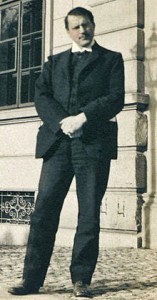
Carl Jung in 1910
It may come as a shock, or at least a revelation, to Visionary Fiction readers and writers that Carl Jung, the eminent Swiss psychiatrist and psychotherapist who founded analytical psychology, defined Visionary Fiction and described it in detail in a lecture delivered in 1929, “Psychology and Literature,” included in the volume Modern Man in Search of a Soul. Rather than the narrow sub-genre it is often reduced to, Jung depicts Visionary Fiction as a super-genre that forms one of the two major divisions of artistic production: “I will call the one mode of artistic creation psychological, and the other visionary.”
So begins the first of two articles by Vic Smith on the Visionary Fiction Alliance website. Part One presents Jung’s critical differentiation between psychological fiction and visionary fiction and relates visionary fiction to Jung’s process for growth in consciousness: Individuation.
Part Two looks at Jung’s prescription that Visionary Fiction be universal in worldview and scope and his observations on why Visionary Fiction is not necessarily “popular.”
I conclude: “Jung’s essay, a cornucopia of wise commentary, bears reading in full. Some VF elements developed since his time are not included, of course. For instance, only towards the very end of his life (1961) did Jung briefly consider reincarnation as a potential source for his famous archetypes, a fact I, who use past lives extensively in my VF novels, regret he did not have the years to explore. Nor was Jung a VF novelist per se; but his insights, as the pioneer who brought the spiritual element back into the mental health field, are priceless to the author seeking a deeper understanding of Visionary Fiction’s psychological and philosophical infrastructure.”
To read the full articles, click the links above.
********
 Click to subscribe to this site’s RSS Feed.
Click to subscribe to this site’s RSS Feed.Click this link to order a copy of The Anathemas, a Novel about Reincarnation and Restitution.Copyright 2013 by Victor E. Smith. All rights reserved.
Share your thoughts on this post. Put in your comment in the space below. Thank you.
January 24, 2014
Book Review: Miracles Happen by Brian L. Weiss, MD
Miracles Happen: The Transformational Healing Power of Past-Life Memories by Brian L. Weiss, M.D.
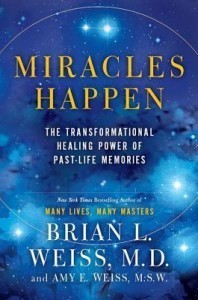 As an author who writes fiction that features reincarnation as a given and has done considerable research into the phenomenon in history and in the field, I thoroughly enjoyed Dr. Weiss’s latest book Miracles Happen. I haven’t studied his earlier works (intend to do so), which evidently present more of the nuts and bolts of his method of regression, but I got the general idea from the mix of testimonials and commentary that comprise this book.
As an author who writes fiction that features reincarnation as a given and has done considerable research into the phenomenon in history and in the field, I thoroughly enjoyed Dr. Weiss’s latest book Miracles Happen. I haven’t studied his earlier works (intend to do so), which evidently present more of the nuts and bolts of his method of regression, but I got the general idea from the mix of testimonials and commentary that comprise this book.
His inclusion of portals other than strict past life regression (future lives, alternate/simultaneous lives, psychometry) adds breadth and stimulation for those already on board with reincarnation, offering other ways to explore that mysterious inner space.
The many stories, which some have reviewed as repetitive or non-sensational, have a cumulative effect that either introduces the key concept that we are NOT our current bodies/personalities living only this time around or reinforces that mode of thinking for those who grasp it conceptually but are working to “get it” as a living reality. Since we, in the western world, have been conditioned by both religious and scientific authorities to ignore such soul phenomena or attribute them to the dark side, it is taking quite some time and repetition for the so-called occult to leak from its hidden streams back into the main water supply. Nevertheless, as Dr. Weiss points out and his subjects experienced, there are many ills, human and societal, that easily resolve by addressing the deeper past. While not including at least a summary of basic methods (why I gave the book four rather than five stars), this work should motivate many to explore and experience this rather simple route to personal health and enlightenment.
********
 Click to subscribe to this site’s RSS Feed.
Click to subscribe to this site’s RSS Feed.Click this link to order a copy of The Anathemas, a Novel about Reincarnation and Restitution.Copyright 2013 by Victor E. Smith. All rights reserved.
Share your thoughts on this post. Put in your comment in the space below. Thank you.


